Artificial intelligence (AI) is allowing the efficient, safe and resource-friendly cleaning of production plants. Cleaning procedures can be accelerated by integrating blockchain technology into production and cleaning processes. This topic was presented in the web conference “Freisinger Tage (Freising Days): digitalization in the food value-creation chain”.
To ensure everybody’s safety during the ongoing Coronavirus pandemic, the “Digitalization in the food value-creation chain” conference was recently held as a web event. The conference was organized jointly by the Fraunhofer Institute for Process Engineering and Packaging IVV and the Industry Association for Food Technology and Packaging IVLV e. V. Over three afternoons, experts from R&D organizations and industry presented R&D findings and innovations in the digitalization of food production.
Two Fraunhofer IVV researchers presented new technologies for facilitating the cleaning of production plants. Max Hesse gave a presentation on digital, adaptive cleaning processes and Dr Thilo Bauer outlined opportunities for quality improvement in production via blockchain-based certification of process data.
Max Hesse outlined how a modular cleaning robot, the Mobile Cleaning Device 4.0 (MCD), benefits hygiene in industrial food production. The MCD was developed by the Fraunhofer IVV Dresden. The intelligent cleaning robot can be used for both internal and external cleaning of machinery and plants. It cannot only clean production equipment but also the surrounding production areas.
Up until now, the demanding task of cleaning production machinery – which is essential for maintaining product quality – has been largely carried out manually. Even with the utmost care, the cleaning is difficult to reproduce, prone to errors, and time-consuming. The new robot technology enables plants and production areas to be cleaned as needed, and in a reproducible way. With its self-learning system, the autonomous robot recognizes the degree of contamination and, based on this, automatically selects a suitable cleaning procedure.
The smart robot not only has benefits for companies in times of crisis, such as during the Coronavirus pandemic, but also whenever there is a shortage of personnel. It is reckoned that 10 % of employees in the food industry conduct cleaning tasks. Even in normal times, the skilled workers required for this are difficult to acquire. Furthermore, the use of the robot also significantly improves efficiency since employees do not have to perform cleaning tasks and can instead carry out other duties.
Tests have shown that the customization of cleaning procedures by the robot can reduce the usage of cleaning agents by up to 50 % due to the fact that only the actually required quantities are applied to surfaces. The complete cleaning process is automatically logged and is hence highly reproducible.
Two robot variants have been developed, and these are being constantly fine-tuned to take on ever more complex cleaning tasks. One robot variant moves over the conveyor belt on the product line and cleans this from inside the production plant. The second variant travels independently through the production hall and cleans floors, ceilings and walls as well as the external surfaces and working surfaces of production machinery. The sophisticated multisensory system (radar, UWB, visual odometry) enables the battery-driven robot to move independently. It is connected to the docking station by a single hose for the cleaning agent. An extendable
robot arm with jet cleaner enables higher parts of the plant to be reached.
An integrated self-learning AI system uses an optical hybrid contamination sensor (white light or UV light/fluorescence method) to detect the degree of contamination and so select appropriate cleaning parameters and process steps. The detected degree of contamination is mirrored in the virtual environment and is taken into account for planning the robot travel and cleaning using innovative jet cleaning simulation. The system thus optimizes itself and learns from each cleaning process.
Dr Thilo Bauer has shown how the integration of blockchain technology into the production and cleaning processes can accelerate the cleaning steps. Secure storage of the production data in the blockchain enables raw material and product data to also be exchanged between different participants along the value-creation chain. The intensity of cleaning can thus be adapted to the relevant raw product.
The exchange of stored data allows short cleaning procedures to be conducted as needed or longer cleaning work to be planned. With knowledge of the extent of cleaning required for different raw materials and producers, process data exchange is vital in order for the production to be planned automatically. This means that products or raw materials that result in more intense plant cleaning are schedules at the end of the production period and not at the start or in the middle. Time-consuming cleaning steps during
the production can therefore be avoided.
Besides using production data for production planning and cleaning procedures, blockchain technology can be eminently used for the automated and legally compliant certification of work that has been carried out. A blockchain system can store data in a way that it is unequivocal who did what and when. The use of cryptographic methods approved by the Federal Office for Information Security for legally compliant documentation and signatures enables the storage of data in compliance with legislation.
If the acquisition of production and cleaning data is largely automated, as is possible using the robot system, then the preparation of time-consuming obligatory documentation can be automated and accelerated. A company that documents its process data in this way has a complete and comprehensive set of data about its production processes. Technical evaluation of the data can then be used for quality improvement and process optimization.





